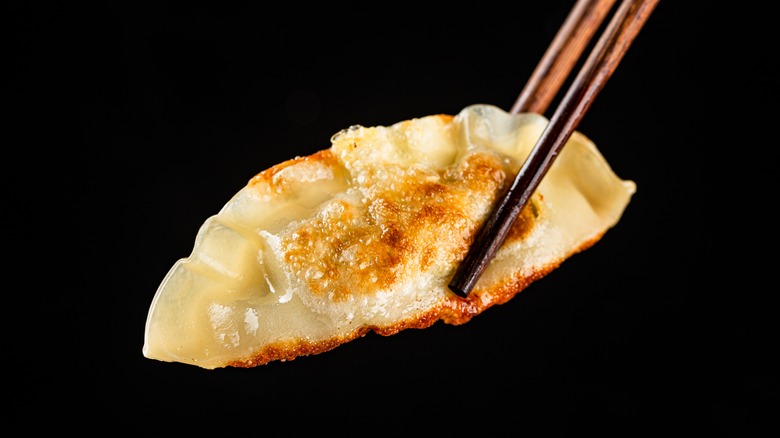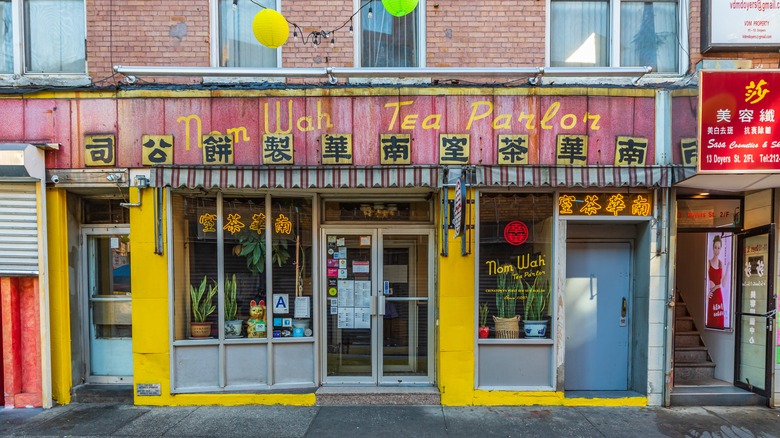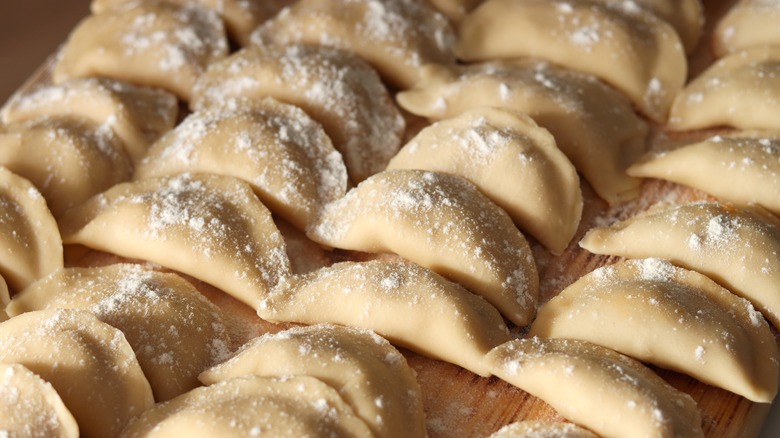How The Pandemic Prompted A Frozen Dumpling Renaissance
Frozen foods have gotten a bad rap for a long time, but the COVID-19 pandemic sparked a reversal of that narrative. A growing number of outlets are speaking up in defense of frozen food, hailing their affordability, accessibility, and, believe it or not, nutritional value. The Academy of Nutrition and Dietetics points out that frozen foods not only retain their nutrients, but some even do so better than foods stored at refrigerator or room temperatures.
Nevertheless, frozen foods remained a hard sell for some in this era. But sometimes a change in mindset needs to be forced upon us, and the pandemic did that in a lot of ways. The American frozen food industry, valued at $54 billion in 2019, rocketed to a value of $72.2 billion in 2022, according to the American Frozen Food Institute. To understand what's driven this change, let's do a case study in dumplings.
Chinese-style dumplings like jiaozi, baozi, and the famous soup-filled xiao long bao are the ideal frozen meal. With the tender contents sealed in a dough that simply needs to be protected from freezer burn, they will retain their intended texture almost indefinitely, and they can be steamed straight out of the freezer to achieve restaurant-like results. During the height of the pandemic, numerous Chinese restaurants across the United States were forced to stop service, but by falling back on frozen dumplings, they were able to save themselves.
Restaurants that closed due to COVID started selling frozen dumplings
2020 was supposed to be a celebratory year for Nom Wah Tea Parlor. The oldest Chinese restaurant in New York City was set to celebrate one hundred years in business, but then, the pandemic arrived and sales plummeted. On March 15 of that year, the restaurant closed down, and subsequently laid off its staff. Owner Wilson Tang was at a loss, forced to contemplate the untimely end of an institution, but then, he had an idea. Nom Wah's famous dim sum could easily be frozen, providing a restaurant-quality meal to diners stuck at home, so the restaurant shifted its business model to focus on selling frozen dumplings. By partnering with e-retailer Gold Belly, Nom Wah expanded to a nationwide reach, and today, more than three years after it initially shut down for COVID, the Tea Parlor continues to build its business of frozen dim sum.
On the opposite side of the country, in Bellevue, Washington, Jennifer Liao and Caleb Wang faced the same COVID-related problems. Their restaurant, Xiao Chi Jie, had been founded in 2018, inspired by Wang's love of the xiao long bao found in his hometown of Shanghai. Shortly after the pandemic began, they started selling frozen dumplings on the local level and, finding quick success, they expanded to offer nationwide shipping in 2021. The business model proved so successful that Liao and Wang decided to rebrand as MìLà, recruiting actor Simu Liu as their Chief Content Officer. Meanwhile, similar stories played out across the country.
Frozen dumplings offer several business advantages
The seeds of the frozen dumpling boom were planted well before the pandemic. Many Chinese restaurants already sold frozen dumplings on request, usually in quantities of around 50. However, this practice was far from a full-fledged business. Restaurants rarely advertised frozen dumplings for sale, and their availability was an off-menu secret known mostly among Chinese-Americans. When COVID upended the restaurant industry, the tried-and-true business of selling frozen dumplings went from a side gig to a principal source of income, but the transition wasn't perfectly smooth.
Shifting business models from restaurant service to frozen dumpling production comes with certain challenges. Different equipment is required to turn out dumplings in bulk, and to expand the customer base, restaurants need to form new partnerships with distributors. Some ship directly to customers, while others sell through grocery stores. That's what Washington, D.C.-based Laoban did in shifting from the restaurant business to frozen dim sum. By choosing the grocery route, companies can alleviate some of the shipping and storage costs while increasing their product's visibility.
Making the switch to frozen food offers several business advantages that, in many restaurateurs' eyes, outweigh the challenges. Companies could keep producing throughout the pandemic, even when dining out was restricted. The frozen food business also demands less human labor and less physical space than a restaurant, saving money. Not every food is as easily adapted to the frozen meal space as dumplings are, but as the frozen industry as a whole continues to grow, we may see more restaurants making similar moves.


